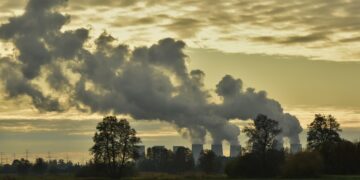Rising Seas: Understanding the Impact and Navigating a Future with Higher Water Levels
Introduction to Rising Sea Levels
As the planet warms, one of the most visible and concerning effects is the rise in sea levels globally. Rising seas are not just a hypothetical scenario but a current reality that poses significant risks to coastal communities, ecosystems, and the global economy. This phenomenon, primarily driven by climate change, results from the expansion of seawater as it warms and the increased melting of ice over land. Understanding the implications of rising sea levels is crucial for planning and adaptation strategies to safeguard vulnerable areas and populations.
Causes of Rising Sea Levels
The principal cause of rising sea levels is climate change, exacerbated by the greenhouse gas emissions from human activities. Two major processes contribute to sea level rise:
- Thermal Expansion: As the atmosphere warms due to increased concentrations of greenhouse gases, the ocean also warms, and water expands in volume. This thermal expansion accounts for about half of the observed rise in sea level.
- Melting of Ice: The other significant contributor to rising sea levels is the melting of ice from glaciers and ice sheets in Greenland and Antarctica. As this ice melts, it adds water to the oceans, further increasing sea levels.
Both of these processes are influenced by the rate of global warming, which is why reducing greenhouse gas emissions is seen as a crucial step in managing sea level rise.
Impacts of Rising Seas
The consequences of rising sea levels are far-reaching and can affect both the natural environment and human populations. Key impacts include:
- Coastal Erosion: Higher sea levels allow waves to reach further inland, which can lead to significant erosion of beaches and cliffs.
- Increased Flooding: As sea levels rise, low-lying areas are more prone to flooding, especially during high tides and storm surges. This can result in damage to infrastructure, homes, and businesses.
- Loss of Habitat: Many coastal and marine ecosystems, such as mangroves and coral reefs, are threatened by rising seas. These ecosystems are crucial for biodiversity and as sources of food and economic activity for many communities.
- Salinization of Water: Intrusion of saltwater into freshwater systems compromises the availability of potable water and can impact agriculture by salinizing soil.
Addressing these impacts requires both local and global efforts to mitigate climate change and adapt to unavoidable changes.
Adaptation Strategies
The increasing impacts of rising seas compel both governments and communities to develop strategies to adapt and mitigate these changes. Some effective adaptation strategies include:
- Building Sea Walls and Barriers: To protect against storm surges and high tides, many cities around the world have constructed sea walls, storm surge barriers, and levees. While these can be effective, they are also expensive and can have environmental impacts.
- Managed Retreat: In some cases, it may be more viable to relocate structures and communities away from vulnerable areas. Managed retreat allows the coastline to move naturally and can be less costly in the long run.
- Ecosystem Restoration: Restoring coastal ecosystems like mangroves and wetlands can provide natural barriers against storm surges and help absorb CO2 from the atmosphere.
- Zoning and Planning: Governments can implement zoning laws to prevent new development in high-risk areas and plan for higher future sea levels in infrastructure and housing developments.
Common Questions About Rising Sea Levels
How much will sea levels rise by 2100?
Predictions vary, but most estimates suggest that sea levels could rise between 0.5 and 2 meters by 2100, depending on how effectively global greenhouse gas emissions are managed.
Can we stop rising sea levels?
While we cannot completely halt sea level rise in the short term, reducing global warming through significant reductions in greenhouse gas emissions can slow the rate of rise and reduce long-term impacts.
What countries are most at risk from rising seas?
Low-lying island nations, such as the Maldives, Kiribati, and Tuvalu, are extremely vulnerable, as are populous coastal regions in countries like Bangladesh, Egypt, and Vietnam.
Conclusion: The Path Forward with Rising Seas
Rising sea levels are an urgent issue requiring immediate and sustained action to minimize impacts. Combining global efforts to reduce emissions with local adaptation strategies offers the best path forward to manage rising sea risks effectively. Public awareness and scientific research play critical roles in our collective response to this growing challenge.










